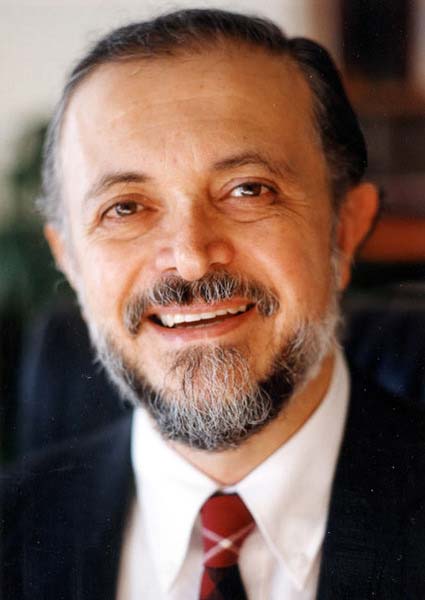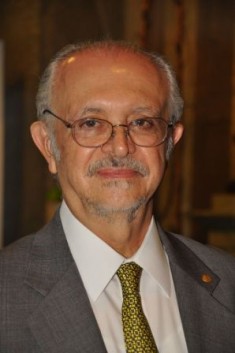| Mario Molina | |
|---|---|
 |
|
| Chemist | |
| Specialty | Antartic ozone hole |
| Born | Mar. 19, 1943 Mexico City, Mexico |
| Nationality | Mexican |
Mario Molina is a famous Mexican chemist. He is one amongst precursors to the discovery of Antarctic ozone hole. He was also a co-recipient, along with F. Sherwood Rowland and Paul Crutzen, of the 1995 Nobel Prize in Chemistry. This was due to his role in explaining the threat to the Earth’s ozone layer by CFCs (chlorofluorocarbon gases). He became the first Mexico-born person to ever receive this award.
Early Life and Education
Mario Molina was born on March 19, 1943, in Mexico. His father was a lawyer and a diplomat who served in many countries, including Australia, Ethiopia, and the Philippines. At an early age, he showed great interest in science. He even made his own chemistry lab in their home by turning the bathroom into a laboratory and experiment area.
Molina was very fascinated by his toy microscope; this is where he first viewed paramecia and amoeba. For several hours each day, he would play with his chemistry set in the bathroom. One of his aunts, Esther Molina, helped foster his interest by giving him more challenging experiments.
Obtaining His Degrees
During his time in Europe, he was very disappointed that his classmates had very little interest in chemistry. Since he had already made up his mind to be a chemist, he obtained his bachelor’s degree in chemical engineering in 1965.
When he was done with his undergraduate studies, Mario pursued his PhD in physical chemistry. He attended the University of Freiburg in Germany and had his postgraduate degree in 1967. In 1972, he got his doctoral degree from University of California after he realized he needed more knowledge to succeed in his field.
Molina’s Post-Grad Achievements
Mario Molina joined other scientists and formed a research group led by George Pimentel who played a great role in developing matrix isolation techniques. The goal of this group was to study the molecular dynamics using chemical lasers. For his graduate work, he investigated on internal energy distribution in chemical reaction and photochemical products. Here he had a chance to work using vacuum lines, optics and other advanced equipment.
Molina’s Career
After his PhD, Mario stayed for one more year in Berkeley where he continued his research in chemical dynamics. He later joined Professor Sherwood’s group. Professor Sherwood inspired Mario to find out about the effects of CFCs on the environment. Mario actually learned about a new field in chemistry called atmospheric chemistry.
Mario and Sherwood were able to come up with the CFC ozone depletion theory. At first, the research was not very interesting since Mario knew that as CFCs drifted to higher altitudes, they were destroyed. However, the consequences of the accumulated compounds made this study very interesting. They discovered how chlorine atoms produced when CFCs decomposed damaged the ozone layer. After their research, they discovered that the CFCs in the atmosphere would deplete the ozone layer with time.
These findings on the ozone depletion theory were later published in 1975 in Nature. They made efforts to inform other scientists and policymakers of their findings. They wanted the laws to protect the earth’s ozone layer through the regulation of CFC use.
One year later, Mario was appointed a faculty member at the University of California. Here, he began his own research. He set up his own program to investigate spectroscopic and chemical properties of different compounds that have important role in the atmosphere. Some of the compounds he focused on included chlorine, hypochlorous acid, chlorine nitrate and chlorine nitrate.
While Mario Molina enjoyed his year in Irvine, he had limited time for doing experiments. After seven years, he joined the Molecular Physics and Chemistry department that was at the Jet Propulsion Laboratory in 1982. He was part of a small team, but he had time and resources to conduct experiments of his own.
Awards and Recognitions
Apart from the Nobel Prize Award, he was also awarded the Esselen Award of Northeast section of the American Chemical Society in 1987. In 1989, he was awarded the United Nations Environmental Programme Global 500 Award. In 1990, the Pew Charitable Trusts Scholars Program in Conservation gave Mario Molina a grant of $150,000. In 1998, Mario received the Willard Gibbs Medal and the American Chemical society Prize for Creative Advances in Environment Technology and Science.
Mario Molina has several honorary degrees from various education bodies such as Duke, Yale and Harvard Universities. On August 8, 2013, he received the Presidential Medal of Freedom from President Obama.
